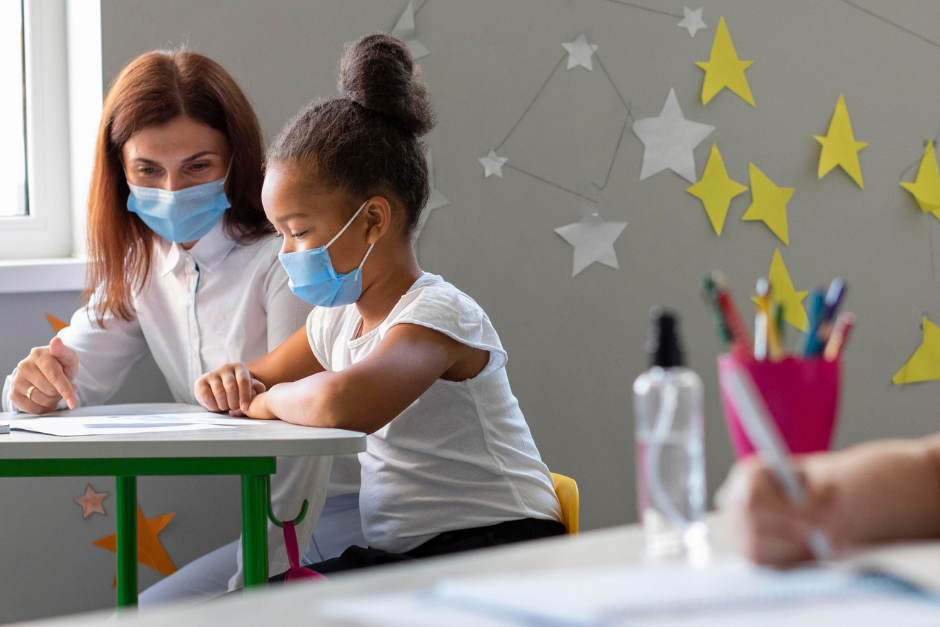During the nearly two years we have been dealing with COVID-19, millions of people have experienced trauma. The death of a loved one and loss of a home or income are singular traumatic events. Many millions more, are living with continuing stress stemming from uncertainty, confusion, disruption and fear. This type of “toxic stress” is also traumatizing – with significant repercussions on our mental and physical health.
A growing body of evidence indicates that children and adolescents especially are struggling with these repercussions. The American Academy of Pediatrics and other leading health organizations recently declared children’s mental health a national emergency. Data gathered by the CDC shows a spike in suicides by young people under the age of 18. And a study of pediatric insurance claims filed between January and November 2020, conducted by the nonprofit FAIR Health, found a sharp increase in mental-health-related problems, especially generalized anxiety disorder, major depressive disorder and intentional self-harm.
Meanwhile, mental health practitioners, physicians, social workers, educators and caregivers who work with young people, report seeing significant increases in emotional and behavioral issues.
What is Trauma-Informed Care?
The pandemic has certainly caused a great deal of trauma. But experts say it is highlighting an already existing need for an understanding of the impact of trauma when working with adolescents and children. We know that household dysfunction, abuse, neglect, poverty and racism are all too common causes of trauma. And 62% of 13 to 17-year-olds report having been exposed to at least one traumatic experience in their life.
Trauma-Informed Care is one response to this need that is growing in stature. A trauma-informed approach shifts from a model of professionals asking the child “What’s wrong with you?” to one that asks, “What has happened to you?” It assumes that an individual is more likely than not to have a history of trauma and approaches the child with that awareness and a focus on empathy and healing.
In 2014, the Substance Abuse and Mental Health Services Administration published the of Trauma-Informed Care. These include:
- Realizing the widespread impact of trauma and understanding potential paths for recovery.
- Recognizing the signs and symptoms of trauma.
- Responding by fully integrating knowledge about trauma into care for the individual.
- Resisting re-traumatization.
When it comes to working with adolescents and children these key elements translate into:
- Making the child or adolescent feel both physically and psychologically safe.
- Building trust and connection.
- Becoming trauma aware and knowledgeable about the impact and consequences of traumatic experiences.
- Learning how to identify the signs of stress and associated behaviors to be able to respond with awareness and empathy.
- Encouraging open communication. Listening and responding with empathy.
- Helping them build resilience and wellbeing (typically through self-care and mindfulness exercises) as well as self-regulation skills.
- Supporting their existing strengths.
- Empowering them to have a voice in their healing by involving them in developing coping strategies.
- Partnering with others who care for the individual. (Teachers, parents, community organizations, etc.)
What Does it Look Like?
In recent years, a number of school districts have adopted a trauma-informed approach.
Trauma-informed teaching starts with an understanding of how trauma can impact learning and behavior. With this approach, educators think about what student behavior may be telling them. And they reflect on their teaching practices to find ways to better support students who may be experiencing trauma.
A trauma-informed learning environment is created by promoting the wellness of all students, ensuring they feel safe and supported physically, socially, emotionally and academically. Adults work with children to promote healthy interactions, and teach social, emotional and self-regulation skills. Parents, teachers and administrators work together in focusing on a student’s experiences, and needs and in carrying trauma-informed practices beyond the classroom.
In a recent article on the Psychology Today website Lantie Jorandby, M.D. argued that one of the (few) silver linings of the pandemic is that it has revealed “the cracks in our mental healthcare system.” While the pandemic has highlighted the failures, it has also shown where opportunities are, Jorandby wrote. A wider understanding of Trauma-Informed Care certainly is one of these.

